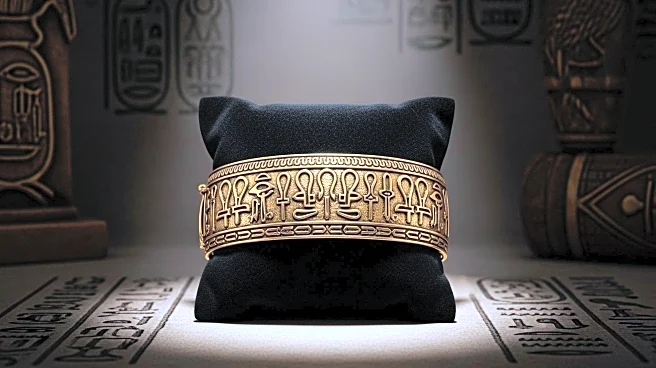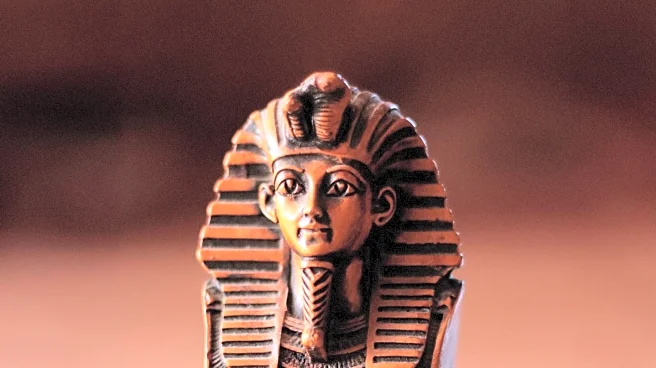What's Happening?
A 3,000-year-old bracelet belonging to Pharaoh Amenemope was stolen from Cairo's Egyptian Museum and melted down for gold, causing public outrage. The theft occurred on September 9 while museum officials were preparing artifacts for an exhibit in Italy. Tourism and Antiquities Minister Sherif Fathy attributed the theft to lax security procedures at the museum, which lacked security cameras in the restoration lab where the bracelet was kept. Four suspects, including a museum restoration specialist, have been arrested. The bracelet was sold through a chain of dealers and eventually melted down to create other gold jewelry.
Why It's Important?
The theft of the ancient bracelet highlights significant security concerns regarding the protection of Egypt's cultural heritage. The incident has sparked calls for improved security measures at museums and tighter control over artifacts, especially those being prepared for international exhibits. The loss of such a historically valuable item underscores the vulnerability of cultural treasures to theft and illegal trade. It also raises questions about the effectiveness of current policies in safeguarding Egypt's rich archaeological heritage, which is a vital part of the nation's identity and tourism industry.
What's Next?
The Egyptian government may face pressure to enhance security protocols at museums and archaeological sites to prevent future thefts. There could be a reevaluation of the procedures for handling and transporting artifacts, particularly those intended for international exhibitions. The incident might lead to increased scrutiny of museum staff and the implementation of more rigorous background checks. Additionally, there may be calls for international cooperation to recover stolen artifacts and prevent their illegal sale on the global market.
Beyond the Headlines
The theft of the bracelet raises ethical concerns about the preservation and commercialization of cultural heritage. It highlights the ongoing challenges in balancing the display of artifacts for educational purposes with the need to protect them from theft. The incident also reflects broader issues of cultural loss and the impact of illegal trade on historical artifacts. It may prompt discussions on the responsibilities of museums and governments in safeguarding cultural heritage and the role of international organizations in supporting these efforts.











